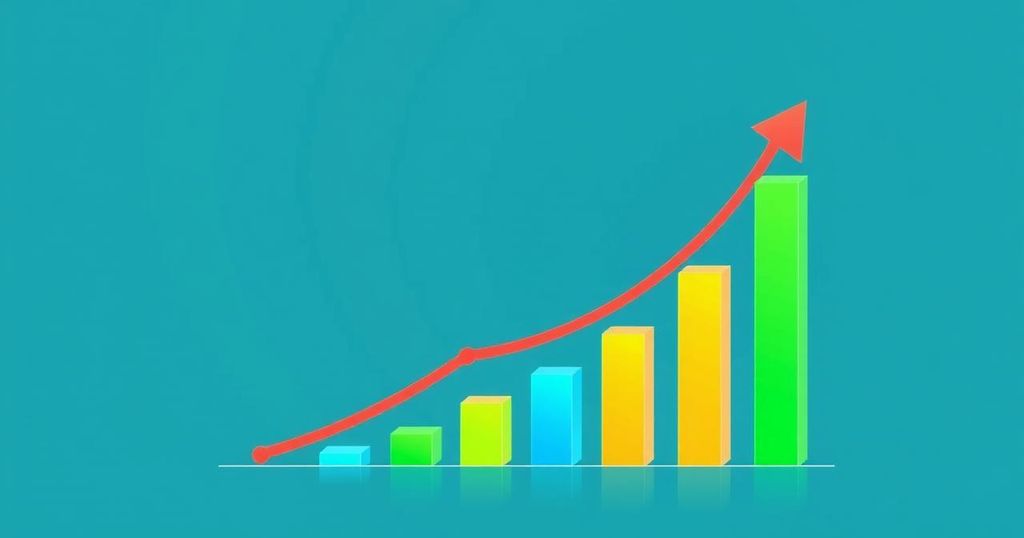In February 2025, Nigeria’s PMI increased to 53.7, indicating the fastest productivity growth in 14 months. The report highlights improved business conditions, with all major sectors experiencing growth. The increase is attributed to stronger customer demand and easing inflation. Predictions for 2025 suggest continued growth in the non-oil sector due to stable exchange rates and improved liquidity.
In February 2025, Nigeria’s economy showcased its fastest productivity growth in 14 months, with the Purchasing Managers’ Index (PMI) rising to 53.7 from January’s 52.0, as reported by Stanbic IBTC Bank. This increase highlights a notable enhancement in business conditions, marking the most significant progress since January 2024. The data indicates a solid monthly improvement, reinforcing a consistent strength in the private sector over three consecutive months.
Stronger customer demand and higher sales prompted Nigerian companies to increase output in February, continuing a growth sequence that now stands at three months. All four monitored sectors—agriculture, manufacturing, services, and wholesale and retail—reported activity increases, although growth in wholesale and retail was minimal. The rise in new orders also registered a marked acceleration, particularly evident in the consumer’s willingness to undertake new projects.
February’s report also noted that while input costs rose, they did so at the slowest rate in ten months, amidst higher raw material prices and increased staff costs—particularly pronounced since March 2024. Mr. Muyiwa Oni, Head of Equity Research West Africa at Stanbic IBTC Bank, highlighted the improved activity within Nigeria’s private sector attributed to a stable exchange rate and moderated fuel prices, helping alleviate inflationary pressures and bolster consumer demand.
With new orders increasing for the fourth month running, February also saw a significant rise in output, settling at 56.9 points from January’s 53.7. The latest input price inflation was the lowest since April 2024, yet almost 39% of companies raised their output prices, while fewer than 1% reported price reductions. Oni also observed that Nigeria’s real GDP grew by 3.84% year-over-year in Q4:24, surpassing the previous quarter’s 3.46% and marking its highest growth since Q4:21.
The services sector remained the main contributor to GDP growth in Q4:24, accounting for 79% of the increase, followed by agriculture at 11.9%, and industries contributing 9%. Looking ahead to 2025, the outlook for Nigeria’s non-oil sector appears promising, bolstered by sustained FX stability and improved liquidity, potentially facilitating growth across manufacturing, trade, and real estate. Reduction in borrowing costs is also anticipated to support further expansion in this sector.
In summary, Nigeria experienced its most robust productivity growth in 14 months during February 2025, with significant improvements across various sectors. The increase in the PMI, alongside the rise in output and new orders, underscores a strengthening private sector. As Nigeria looks toward 2025, the combination of stable foreign exchange conditions and reduced borrowing costs bodes well for continued development in the non-oil economy.
Original Source: www.thisdaylive.com




